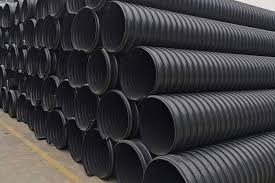Sep . 11, 2024 09:23 Back to list
China PPR Pipe vs PVC Pipe - A Comprehensive Comparison
Comparing China PPR Pipe and PVC Pipe An Overview
When it comes to plumbing and construction, the choice of materials is crucial for ensuring durability, safety, and efficiency. Among the popular options are PPR (Polypropylene Random Copolymer) pipes and PVC (Polyvinyl Chloride) pipes. Both are extensively used in various applications, but they have distinct properties and advantages that cater to different needs. Here, we explore the merits and limitations of China-made PPR pipes in comparison to PVC pipes.
Material Properties
PPR pipes, known for their robust and flexible nature, are made from a type of thermoplastic. They boast excellent resistance to high temperatures, making them suitable for hot water supply systems. Additionally, PPR pipes are excellent insulators and do not corrode or scale, which prolongs their lifespan and maintains the quality of the transported water. On the other hand, PVC pipes are made from a rigid plastic with a high resistance to chemical erosion, making them ideal for cold water applications and drainage systems.
Installation and Maintenance
One of the significant advantages of PPR pipes is their ease of installation. They can be thermally welded, which means that joints are less likely to leak compared to the glued joints commonly found in PVC systems. This feature also allows for a simpler and cleaner installation process, which can save time and reduce labor costs. PVC pipes, while generally lighter and easier to handle, require proper adhesives for joints and may not be as straightforward to repair in case of damage.
Durability and Lifespan
In terms of durability, PPR pipes typically have a longer lifespan than PVC pipes. PPR can withstand higher temperatures and pressures without compromising its integrity, making it preferable for hot water systems. Meanwhile, PVC pipes can become brittle over time when exposed to UV light and changing temperatures, which may lead to cracking and requiring replacement.
china ppr pipe vs pvc pipe

Environmental Impact
PPR pipes are often seen as the more environmentally friendly option. They can be recycled more efficiently, as they do not release harmful chemicals into the environment during their production or end-of-life phase. PVC, however, has faced criticism for its environmental impact, particularly regarding the release of dioxins during manufacturing and disposal.
Cost Considerations
Cost is always an important factor in material selection. Generally, PVC pipes tend to be less expensive than PPR pipes, making them a go-to choice for budget-conscious projects. However, the initial savings from using PVC may be offset by higher maintenance costs due to the need for regular replacement and repairs.
Conclusion
In summary, both China PPR pipes and PVC pipes have their unique advantages and disadvantages. PPR pipes offer superior durability, resistance to high temperatures, and ease of installation, making them ideal for hot water and potable water systems. On the other hand, PVC pipes are cost-effective and widely used for drainage and cold water applications.
Ultimately, the choice between PPR and PVC pipes should be guided by the specific requirements of the project, budget considerations, and long-term performance expectations. By carefully evaluating these factors, one can make an informed decision that aligns with the project's needs.
-
DN25 PPR Water Pipes for Kitchen - Durable & Leak-Proof Plumbing Solution
NewsJul.30,2025
-
HDPE Sprinkler Pipe Manufacturers – Durable Irrigation Solutions
NewsJul.30,2025
-
High-Quality DN150 HDPE Pipes for Gas Delivery – Durable & Leak-Proof
NewsJul.29,2025
-
140mm PVC Drilling Pipe for Efficient Borehole Drilling Solutions
NewsJul.29,2025
-
High-Quality UPVC Column Pipes for Submersible Pumps – Corrosion Resistant
NewsJul.29,2025
-
DN500 HDPE Double Wall Corrugated Drain Pipes for Efficient Drainage
NewsJul.28,2025

